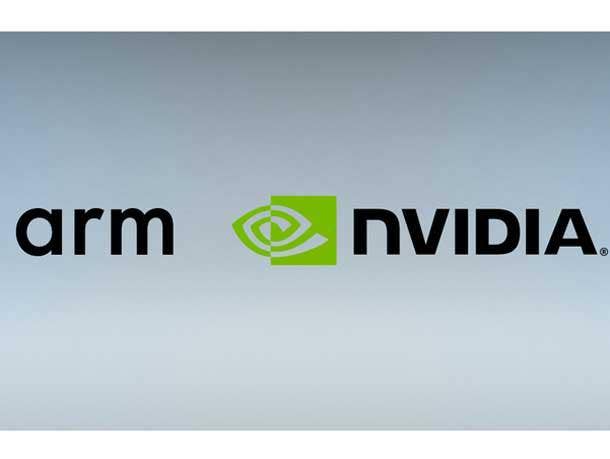Nvidia May Become Key Investor In Arm IPO After Failed Acquisition: Report
Arm is hoping several of its existing partners, including Nvidia and Intel, will invest long-term positions in the company at the initial public offering stage, according to the report. One partner tells CRN that this consortium approach to owning the British chip designer should quell concerns that it would favor any one company in contrast to the fears regulators had when Nvidia tried —and then failed—to acquire Arm.

Nvidia failed to acquire British chip designer Arm last year, so it may instead become an anchor investor in the company’s upcoming initial public offering, according to a new report.
Citing anonymous sources familiar with the matter, the Financial Times reported Wednesday that Arm has been talking to Nvidia about the possibility of becoming an anchor investor in the IPO, which could happen on the U.S. stock market as soon as September.
[Related: The 10 Biggest Nvidia News Stories Of 2023 (So Far)]
Spokespeople for Arm and Nvidia declined to comment. Softbank did not respond to a request for comment.
Arm is hoping several of its existing partners, including Nvidia and Intel, will invest long-term positions at the IPO stage, the newspaper said. Arm’s current owner, Japan-based SoftBank, wants to shore up enough support so that it can offload its stake after acquiring the chip designer for $32 billion in 2016.
Nvidia’s involvement could amount to a small minority investment in the “low hundreds of millions of dollars,” the newspaper said. However, Nvidia and Arm have apparently not agreed yet on a valuation, with Nvidia pushing to value Arm at $35 billion to $40 billion—the high end of which is what Nvidia sought to pay to acquire the company before the deal collapsed—and Arm seeking closer to $80 billion.
One source told the Financial Times that discussions between the two companies haven’t finalized, and it could end with no investment from Nvidia.
While Nvidia has used Arm’s chip designs in its products for years as a partner, the GPU giant ramped up its interest in the company’s eponymous instruction set architecture—which competes with the x86 architecture used by Intel and AMD—when it announced plans to acquire Arm for $40 billion in 2020.
Most notably, Nvidia plans to release later this year two chip modules for high-performance computing and AI workloads that use Arm-based CPUs. The first, called the Grace Superchip, uses two 72-core Grace CPUs while the second, the Grace Hoper Superchip, combines a 72-core Grace CPU with an H100 GPU that is based on Nvidia’s Hopper architecture.
Nvidia terminated its bid to acquire Arm in early 2022 due to “significant regulatory challenges” that included a lawsuit from the U.S Federal Trade Commission seeking to block the deal over concerns that the GPU giant would unfairly use its ownership of Arm to hurt competition. Before the deal fell through, the company had repeatedly promised to invest in Arm’s research and development, maintain Arm’s open licensing model and create more opportunities for Arm licensees.
The failed acquisition prompted SoftBank to quickly pivot to planning an IPO for Arm, and it didn’t take long for the industry to start floating the idea of a consortium of semiconductor companies that could jointly own the British chip designer with the goal of keeping Arm a neutral party.
Andy Lin, CTO at Houston-based system integrator Mark III Systems, told CRN that the consortium approach to owning Arm should quell concerns that the chip designer would favor any one company in contrast to the fears regulators had when Nvidia was trying to acquire Arm.
“I think that this is the right way to go about it, where Nvidia has some form of partnership from a financial perspective, but it doesn’t raise any regulatory concerns. Obviously, there are other companies involved as well in the consortium, so they all have a vested interest in the success of Arm long term,” he said.